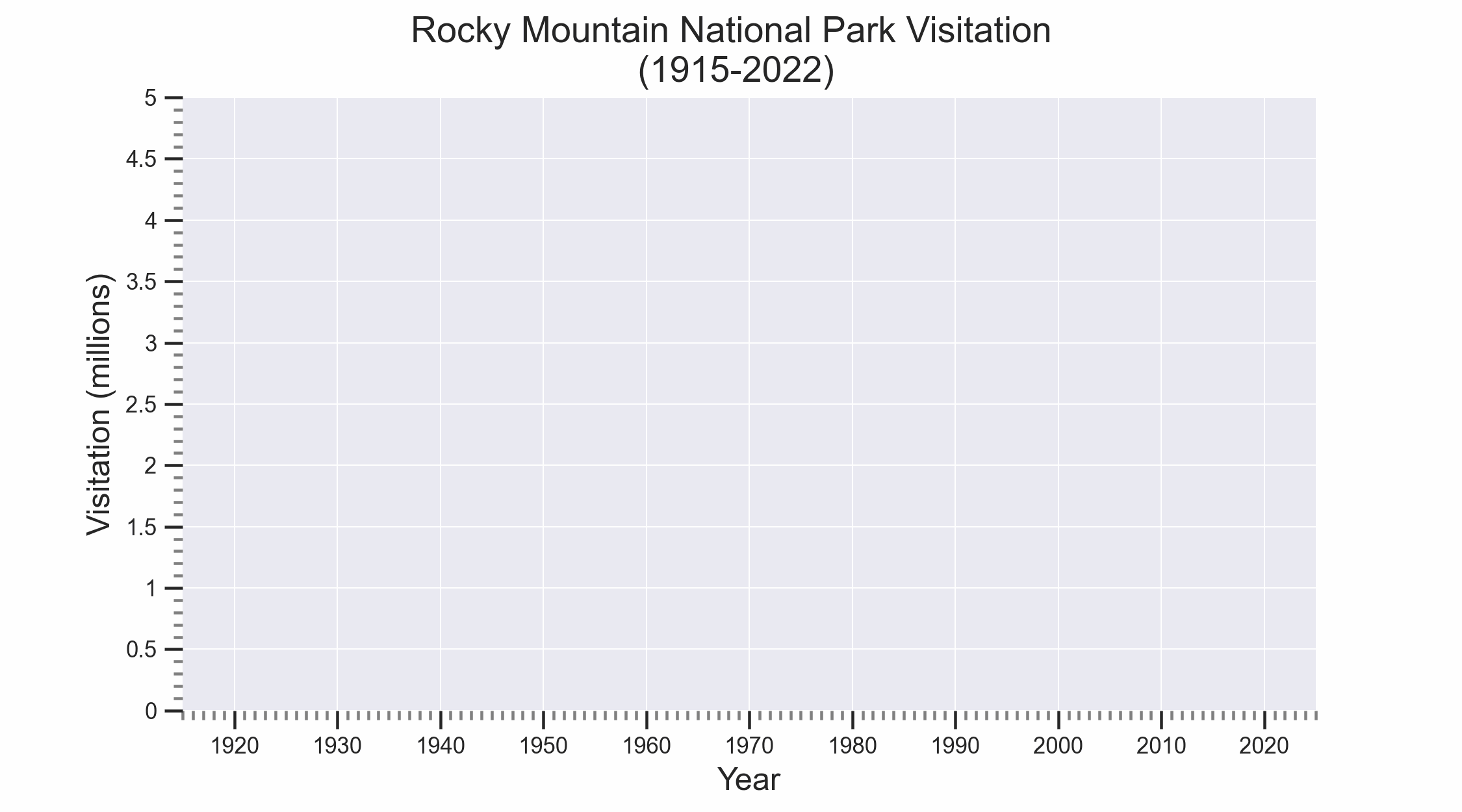Visualizing A Century of Rocky Mountain National Park Visitation
Published:
My adivisor has had a long-term collaboration with the Rocky Mountain National Park (RMNP), which has provided a laboratory for many of his graduate students over time. I have had the privilege of working with the Resource Stewardship team at Rocky Mountain National Park (RMNP) since the beginning of my graduate work and it has provided a unique opportunity to work on a wide range of projects.
I presented my research on the Rocky Mountaion National Park Timed Entry Permit System (TEPS) at the 2024 Biennial Research Conference this past March, and I created a cool visualization of the trends in park visitation over the course of a century – special thanks to NPS IRMA for the data.

A century of RMNP Visitation, with annotations for time between each million visitors
When I show this figure, I like to provide some historical context and landmarks in time that correspond and explain the trends in the figure:
- 1945-1955 (Post-WWII): The return of US Service members from WWII, the affordability of automobiles, and the expansion of the interstate-highway system lead to an increase in visitation across the National Park Service.
- 1965-1980 (Baby Boom): The Baby Boom generation and the growing environmental movement contribute to an increase in interest and visitation to National Parks.
Since RMNP was formally established in 1915, there was a slow and steady increase in visitation for the first 64 years until annual visitation reach 3 million visitors. Visitation remained stable for nearly 40 years, until about 2016 when visitation topped 4 million visitors for the first time and surpassed 4.5 million visits in 2019. This figure illustrates how rapid changes in visitor use have occurred in recent years which have created challenges for both the park visitors and management. For visitors, the increase in visitation resulted in decreased availability of parking and concerns about crowding and the quality of the visitor experience. For managers, the increase in visitation to popular areas of the park like the Bear Lake Road created challenges to safely manage the number of visitors and their vehicles in the constrained corridor, often resulting in the road being closed and long lines of vehicles queing to enter the road.
The TEPS study (link to paper) focused on understanding visitor attitudes and perceptions to the TEPS system and it’s affect on their experience. One of the key findings from the study was that more intensive management of high-use settings is generally perceived favorably by visitors and can increase the quality of their experience. But, it’s important that the underlying justification for this management is clearly communicated and reflects the principles of the National Park Service: resource protection, providing a high quality, and safe visitor experience.
